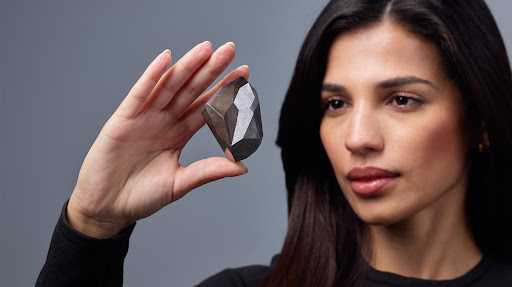The Enigma of Rare Eye Colors: Unveiling the Mystique Behind Nature’s Masterpiece

Eyes, often referred to as the windows to the soul, come in a kaleidoscope of colors that add unique charm to each individual. While brown, blue, green, and hazel are the common hues that dominate the human eye color palette, there exist rare and enchanting eye colors that capture our fascination. These rare eye colors, often considered as nature’s masterpieces, are a testament to the diversity and complexity of human genetics. In this article, we will delve into the world of the rarest eye colors, exploring the science, myths, and cultural significance surrounding these captivating ocular wonders.
Heterochromia: The Striking Mismatch
Heterochromia is a rare and captivating phenomenon where an individual possesses two different colored eyes. This genetic trait can manifest in various forms, including complete heterochromia, where each eye is a distinct color, or sectoral heterochromia, where only a portion of one or both eyes displays a different color. Heterochromia occurs due to variations in the distribution of melanin, the pigment responsible for eye color, during embryonic development. Famous personalities like actress Kate Bosworth and actor Christopher Walken boast this eye-catching feature, contributing to their unique allure.
Amber Eyes: A Glimpse into the Golden Realm
Amber eyes, characterized by a rare golden or coppery hue, are a breathtaking anomaly that captivates onlookers. This unique eye color is a result of low melanin levels, allowing light to reflect off the yellowish stroma, the front part of the iris. Amber eyes are particularly rare, making up only a small percentage of the global population. Renowned for their warm and inviting appearance, individuals with amber eyes are often associated with mystery and a touch of otherworldly allure.
Green Eyes: Nature’s Verdant Jewels
While green eyes are not as rare as some other colors, they still make up only a small fraction of the population. Green eyes are often linked to the presence of a moderate amount of melanin and a scattering of light. This combination creates an entrancing emerald or forest green appearance that is highly sought after. Famous personalities like singer Rihanna and actor Ian Somerhalder are celebrated for their striking green eyes, adding to the allure of this captivating color.
Violet Eyes: A Glimpse into Fantasy
Violet eyes are a truly enchanting rarity that sparks the imagination. Often associated with mythical creatures and otherworldly beings, violet eyes are a result of a combination of low melanin levels and light scattering. The unique hue is caused by a phenomenon called Rayleigh scattering, which occurs when shorter wavelengths of light, such as blue and violet, scatter more easily. Actress Elizabeth Taylor, with her captivating violet eyes, remains an icon of this rare and mesmerizing eye color.
Red Eyes: The Mythical Essence
While completely red eyes are not naturally occurring in humans, the concept of red eyes often carries a mystical and mythical connotation. In reality, red eyes can be a result of medical conditions, such as albinism, which affects the pigmentation of the eyes. The concept of red eyes is frequently portrayed in folklore and popular culture, associating them with supernatural beings and creatures. Despite the rarity of true red eyes, their portrayal in literature and film continues to perpetuate their mythical allure.
Gray Eyes: The Elegance of Subtlety
Gray eyes, often overlooked in discussions about rare eye colors, possess a unique and subtle charm. The color is a result of a mix of blue and green hues with minimal melanin. Gray eyes are known for their adaptability, appearing to change color based on lighting conditions and surroundings. This chameleon-like quality adds an intriguing layer to the already mysterious nature of gray eyes, making them a rare and captivating gem in the world of eye colors.
Cultural Significance of Rare Eye Colors:
Throughout history, various cultures have attached significance to eye colors, considering them as symbols of beauty, mysticism, or even divine connection. In ancient mythology, gods and goddesses were often depicted with extraordinary eye colors, emphasizing their supernatural attributes. In some cultures, specific eye colors were believed to bestow special powers or carry omens. The fascination with rare eye colors has transcended generations, leaving an indelible mark on the collective human consciousness.
Conclusion:
Rare eye colors stand as testaments to the intricate tapestry of human genetics and the wonders of nature. Whether it be the captivating allure of amber eyes, the enchanting mystique of violet eyes, or the subtle elegance of gray eyes, each rare eye color adds a unique chapter to the story of human diversity. As we continue to unravel the mysteries behind these rare ocular wonders, one thing remains certain – the kaleidoscope of eye colors will forever be a source of fascination, capturing our imaginations and inviting us to explore the mesmerizing world within each gaze.
-
What are the rarest eye colors?
- The rarest eye colors include amber, violet, and true red. Heterochromia, where each eye is a different color, is also considered rare.
-
What causes heterochromia?
- Heterochromia is typically caused by variations in melanin distribution during embryonic development. It can be genetic or acquired due to injury, disease, or underlying medical conditions.
-
Why do some people have amber eyes?
- Amber eyes result from low melanin levels, allowing light to reflect off the yellowish stroma in the front part of the iris. This unique color is often associated with warmth and mystery.
-
How rare are violet eyes?
- Violet eyes are extremely rare. The color is created by a combination of low melanin levels and Rayleigh scattering, making it a captivating and uncommon eye color.
-
Can eyes really be red?
- Completely red eyes are not naturally occurring in humans. The concept of red eyes is often associated with mythical creatures, but in reality, red eyes can be a result of medical conditions such as albinism.
-
Do gray eyes change color?
- Yes, gray eyes are known for their adaptability. They may appear to change color based on lighting conditions and surroundings, giving them a chameleon-like quality.
-
Are there cultural beliefs associated with rare eye colors?
- Yes, various cultures throughout history have attached significance to eye colors, considering them as symbols of beauty, mysticism, or divine connection. In some cultures, specific eye colors were believed to bestow special powers or carry omens.
-
Can rare eye colors be inherited?
- Yes, many rare eye colors, including those associated with heterochromia, can be inherited genetically. The specific combination of genes passed down from parents determines an individual’s eye color.
-
Are there any health implications associated with rare eye colors?
- In general, rare eye colors themselves don’t have health implications. However, certain conditions associated with unique eye colors, such as albinism, can impact vision and require appropriate care and management.
-
Can contact lenses change eye color to a rare shade?
- Yes, colored contact lenses are available in various shades, including some that mimic rare eye colors. However, it’s essential to use them safely and under the guidance of an eye care professional.
-
Are there famous personalities with rare eye colors?
- Yes, several celebrities have rare eye colors. For example, Elizabeth Taylor was known for her captivating violet eyes, while actors like Kate Bosworth and Christopher Walken have heterochromia.
-
Can environmental factors influence eye color?
- While genetics play a significant role, environmental factors such as lighting conditions can influence how eye colors appear. This is particularly true for eyes with lighter shades like gray or blue.
These FAQs provide insight into the world of rare eye colors, touching on genetics, cultural significance, and the uniqueness associated with each captivating hue.






